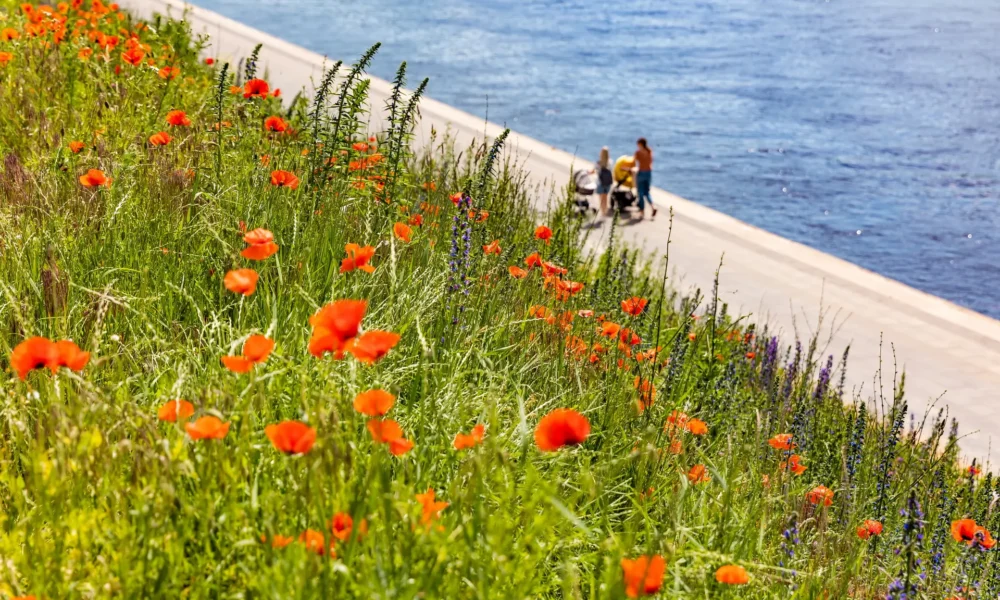Vilnius Residents in Favour of Meadows: Survey Shows Growing Support for Sustainable Mowing
According to a survey of residents conducted by Vilnius City Municipality, 92% of respondents support cutting grass in the city. At the same time, Vilnius residents are increasingly aware of the benefits of sustainable mowing and are in favour of the three mowing schemes used in the city.
“The results of the survey show that an increasing number of Vilnius residents are in favour of a more sustainable approach to city maintenance. Awareness and understanding of the benefits that less frequently mowed natural meadows bring to nature, the living environment and humans is growing,” Gintautas Runovičius, Head of the Urban Environment Division of Vilnius City Municipality, noted.
As many as 63% of the survey respondents said they understood why grass cutting is less frequent in some areas: it helps preserve biodiversity, cool the city and reduce soil erosion. More than two thirds of Vilnius residents support sustainable mowing, while 26% are against it, mostly for aesthetic reasons or fear of ticks.
The vast majority (80%) of Vilnius residents support the possibility to decide for themselves which areas of the city should be mowed sustainably or maintained as short lawns. However, only a third of residents know that they can contact their district authority if they have suggestions for mowing in their neighbourhood. Before doing so, neighbours should agree on changes to the mowing scheme in the courtyards of apartment blocks.
Three Mowing Schemes
Residents who participated in the survey rated the mixed mowing model implemented in Vilnius over the past two years at nearly 7 out of 10.
All common areas maintained by the city are divided into three mowing schemes, with a total area of 5,189 ha. Short lawns (7-12 cm) dominate in parks, squares, courtyards, sports grounds and street dividers. This type of lawn covers 3,946 ha.
Meadows on the slopes of arterial streets, on the banks of the River Neris, in undeveloped areas and in areas selected according to specific criteria are mown from one to three times a year. The area of grassland in the city amounts to 1,196 ha.
Natural regeneration zones (areas that are unmown to allow natural habitats to develop) now cover 47 hectares across the city. These areas are closely monitored. If outbreaks of invasive species are detected, mowing is temporarily resumed to control their spread.
Why Does the City Need Meadows?
Sustainable mowing addresses many of the challenges modern cities face and helps mitigate the effects of climate change. Meadows act as a natural air conditioner for the city—they stay cool on hot days and are not as hot as a short-mown lawn or asphalt. The temperature difference between a meadow and a short lawn can be as much as 20°C. Lush vegetation also absorbs and retains moisture from rain, helps prevent flooding and cools the environment during droughts.
Meadows purify the air by absorbing pollutants and dust, as well as more carbon dioxide than a normal lawn. Ecologically, they are much more valuable: insects, birds and small mammals thrive in sustainably mown meadows, and bees, whose populations are declining worldwide, find flowering plants and food here.
Meadows also add coziness and liveliness to the urban landscape, while sustainable mowing contributes to a more rational management of the city: meadows are less maintenance-intensive. As a result, energy and resources are used where needed the most—in parks, squares and nearby residential areas.
